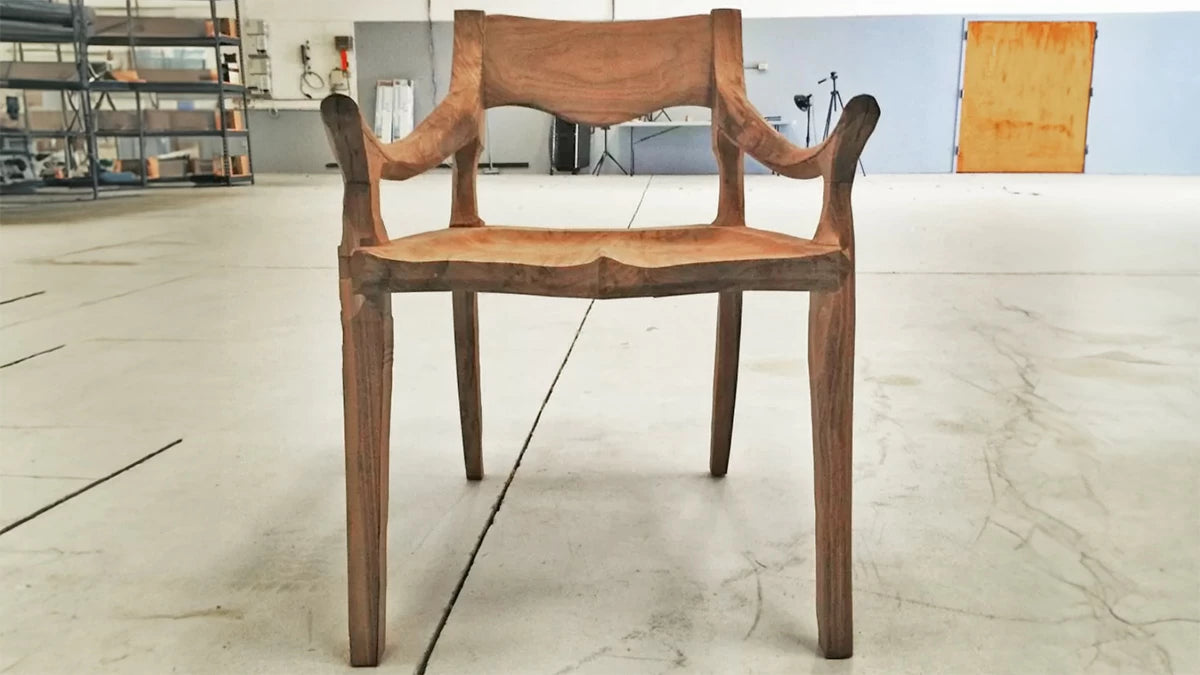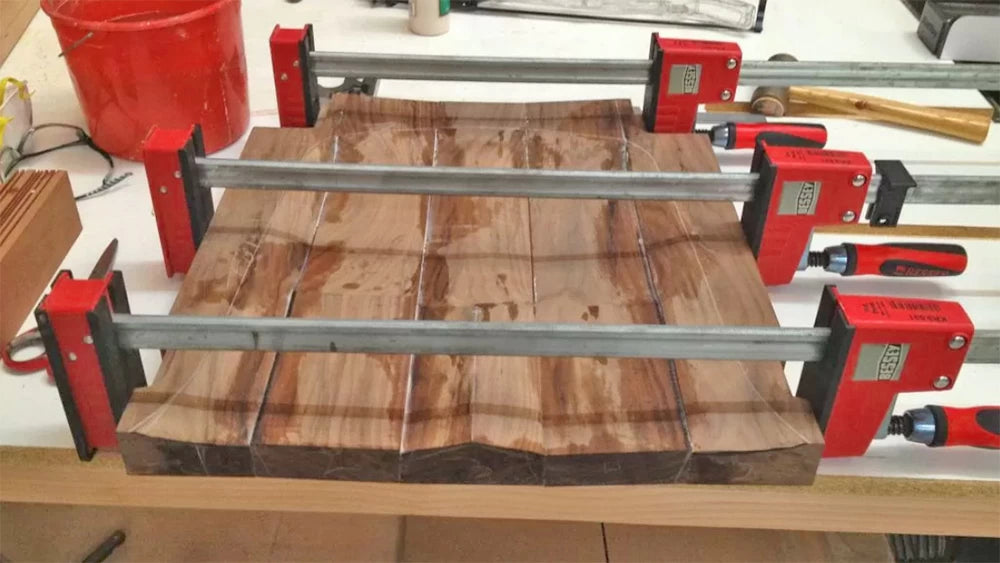
Ever since I saw my first Sam Maloof rocker, I knew I wanted one. A gorgeous sculpted piece of furniture. I also knew that as a lowly professional woodworker I was never going to be able to afford one. So, I decided that one day when I had some free time, I would try to build some Maloof-styled chairs. This was years and years and years ago, and when you work off of commission, you don't spend that much time building things for yourself (ask my poor wife who waited years for a desk), so it was always placed on the back burner as a fun project to tackle one day.
Well, I finally found the day to start one, and boy am I happy I did. I decided to tackle two of the low back side chairs. One walnut, one curly maple.
I toyed with the idea of just forging my own way, but having lived for a long period in Atlanta and hearing enough good things about the Charles Brock-designed Maloof-style chairs and plan kits, I decided to use his method. I have to say that it is a little bit different to use someone else's plans instead of your own, because they do things differently than you, but it's also a great way to learn some new techniques that you may have never tried before.
The start of this build is the seat, commonly referred to as the saddle. I first milled up five pieces of lumber and then put bevels on the three middle ones. I did the bevels on my jointer and used my wixey digital angle gauge to set my exact angle This creates an upcurve and saddle when they are clamped together. You will want to shore up the board-to-board seat joinery by adding dowels, biscuits, loose tenons, or dominos. I used my Domino.



Tackle the seat-to-leg joinery next. You want to do this before you glue up the seat because its really hard to rout out precise square joints on a crazy curve. I first cut out some notches on the two outside boards. These will then get routed out with a 1-1/2" rabbeting router bit on the top and bottom of the notch. You will also need to use your bandsaw to out large chunks of the saddle so that you have less grinding or sanding to do.



OK, are you ready? Seat glue up time. It wasn't too bad. I was a little worried but the big clamps pulled it together tightly with no problem. I let these sit overnight before I started to shape it. This is where the Charles Brock plans really come into super usefulness thanks to the templates. I used the seat template to give myself a very distinct outline for my saddle and then got to work with my right-angle sander. It's got a vacuum attachment but it still made a ton of dust. A ton. This is a little slow going, but it was totally worth it to take some time here. And we have what looks like seats.



Chair legs. These seemed easy. Mill up some wood to dimension for the front legs, basically it needs to fit snugly in the outside of the seat notches. Cut big dados where the notches need to be. Using dial calipers we measure out the seats' tenons and transfer those to cut our legs' mortises. I used my crosscut sled and the 8" Infinity Dadonator dado set. While working make sure to keep checking fit. Then use a 3/4" radius roundover router bit where the joint meets. This joint should fit snugly and cleanly with no gaps. I had gaps. Brock explains how to simply rasp or sand out those gaps.

For the back legs, I needed to get out my templates again and get the back leg to shape. I had to make sure the leg-to-arm and leg-to-seat joints are square and flat. It is a little bit trickier to cut precise dados in the leg to seat joint here. You need to set up some supports because you are only riding on the short flat section of that joint against your sleds fence. It didn't go too bad and these fitted much easier than the front legs after I routed over the area around the joint again.


Part 2...coming soon. As soon as I finish building the chairs! (Just kidding, here's the link to Part 2).


